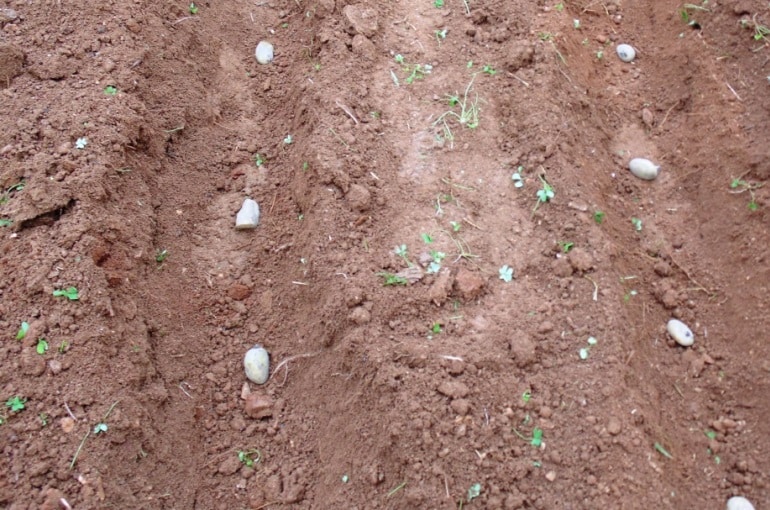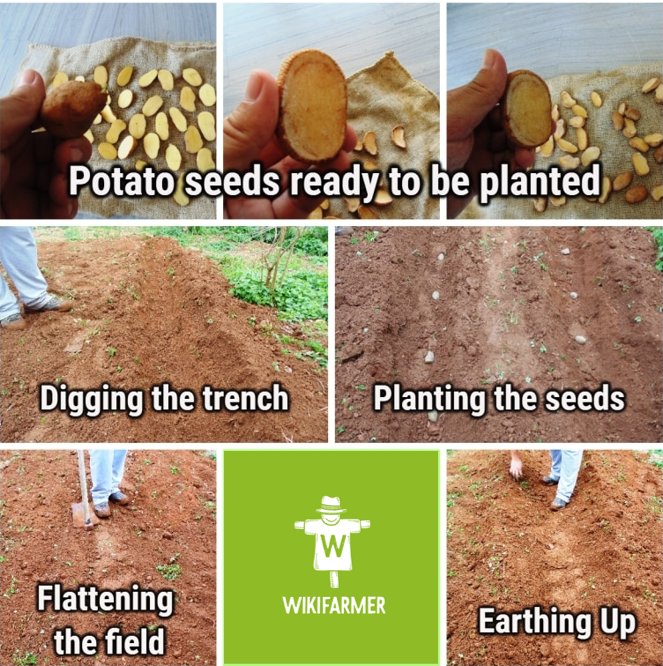How to grow Potatoes

This post is also available in:
This post is also available in:
![]() Español (Spanish)
Español (Spanish) ![]() Français (French)
Français (French) ![]() Deutsch (German)
Deutsch (German) ![]() Nederlands (Dutch)
Nederlands (Dutch) ![]() हिन्दी (Hindi)
हिन्दी (Hindi) ![]() العربية (Arabic)
العربية (Arabic) ![]() Türkçe (Turkish)
Türkçe (Turkish) ![]() 简体中文 (Chinese (Simplified))
简体中文 (Chinese (Simplified)) ![]() Русский (Russian)
Русский (Russian) ![]() Italiano (Italian)
Italiano (Italian) ![]() Português (Portuguese (Brazil))
Português (Portuguese (Brazil)) ![]() Tiếng Việt (Vietnamese)
Tiếng Việt (Vietnamese) ![]() Indonesia (Indonesian)
Indonesia (Indonesian) ![]() polski (Polish)
polski (Polish)
Backyard Growing Potatoes
In a few words, we plant potatoes seeds in “hills” choosing a sunny part of our field during late winter – spring (February- April in most areas) or during summer (July-August in most areas). 3-4 months after planting, we can normally harvest the potatoes that have been created underground. Following the harvest, we plow deeply in order to destroy the remaining plants. Generally we should not cultivate potatoes in the same field for more than two years in succession, because the soil will be depleted and the danger of disease dissemination increases significantly.
We start by purchasing the potato seeds. It is good to prefer certified disease free potato seeds from reputable sellers. Seed potatoes are actually normal potatoes just like the ones we eat, but they are selected for having desirable characteristics. They are also checked or sterilized against carrying various diseases. Alternatively, we can plant potatoes that we have bought from the grocery story, but the selection requires experience and we should expect much lower results in quantity and final weight of potatoes produced. Most gardeners and farmers cut the potato seeds into smaller pieces (there are pros and cons in cutting the potatoes). Be sure to leave at least one eye bud per piece. In general we can cut larger potato tubers (diameter > 45mm), while smaller tubers are planted whole. We leave the seed potatoes pieces in a dry place for 2 days. Then, we will normally be able to see a crust in the flesh (surface) of the potato that we have cut. At that point, we are ready for planting.
Plowing deeply and removing rocks is a necessary procedure before planting seed potatoes. Potatoes are cultivated in “hills”. We first dig a trench (or channel) of 4-6 inches (10-15cm) depth. The length of the trench depends of the quantity of potato seeds we have available. The next trench must be spaced at least 28 inches (70cm) from the first one. We put the potato sets (pieces) inside the trench at a distance of at least 10 inches (25cm) apart. We then flatten our field by covering the trenches with soil. At that point, we must “earth up” our crops by creating hills. We do this, because growing potatoes in flat surface will not help our potato plants thrive and produce good yield. Moreover, earthing up the soil between the trenches will help us distinguish where exactly our seeding rows are located. Many farmers also use the distance between grooves as an irrigation channel. Thus, we must hill them by mounding soil from each side of the row about 4 inches (10cm) high along the base of the plants.
About two months after planting, we shall normally see our healthy and well developed potato plants. At that time, we may have to earth up again our crops, so as to prevent any potatoes from reaching the surface and be exposed to sunlight. If exposed to sunlight, the potatoes will most likely turn green and become unsuitable for human consumption. At that point (two months after planting), we can also consider applying fertilizers, either soil or foliar, if this is necessary (it depends on the field – every field is different and has different needs). We must also check for pests and diseases by observing carefully the shape and color of leaves. Potato has certain water requirements; however the climate and the evapotranspiration of your field will determine the irrigation frequency. If there are no rainfalls in your region, you may have to irrigate your plants from once a week to once a month during the growing period.
 About 3-4 months after planting depending on the climate and seed variety, we are normally ready to harvest our potatoes. Potatoes are ready to be harvested when the foliar starts to die back. Many farmers wait another two weeks from this point, while others start to harvest as soon as the leaves turn yellow. We dig carefully the soil between the seeding rows, searching for potatoes. Once we harvest all our potatoes, it is beneficial to leave them for a couple of hours in the field surface under the sunlight (provided there isn’t a possibility of rain), so that they can dry out naturally.
About 3-4 months after planting depending on the climate and seed variety, we are normally ready to harvest our potatoes. Potatoes are ready to be harvested when the foliar starts to die back. Many farmers wait another two weeks from this point, while others start to harvest as soon as the leaves turn yellow. We dig carefully the soil between the seeding rows, searching for potatoes. Once we harvest all our potatoes, it is beneficial to leave them for a couple of hours in the field surface under the sunlight (provided there isn’t a possibility of rain), so that they can dry out naturally.
You can enrich this article by leaving a comment or photo of your potato growing methods.
2.) How to grow potatoes
3.) Growing Potatoes for Profit
4.) Soil Requirements and Preparation for Potato cultivation
5.) Potato Planting, Seeding Rate and Plant Spacing
6.) Potato Fertilizer Requirements
7.) Potato Water Requirements and Irrigation Systems
9.) Potato Harvest, Yield and Storage








































































